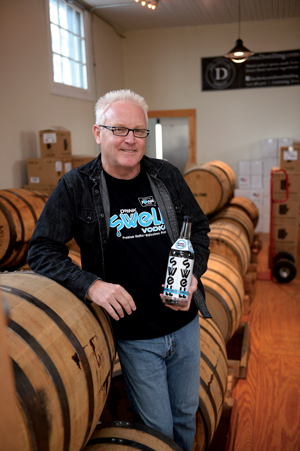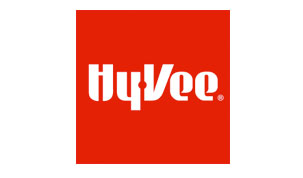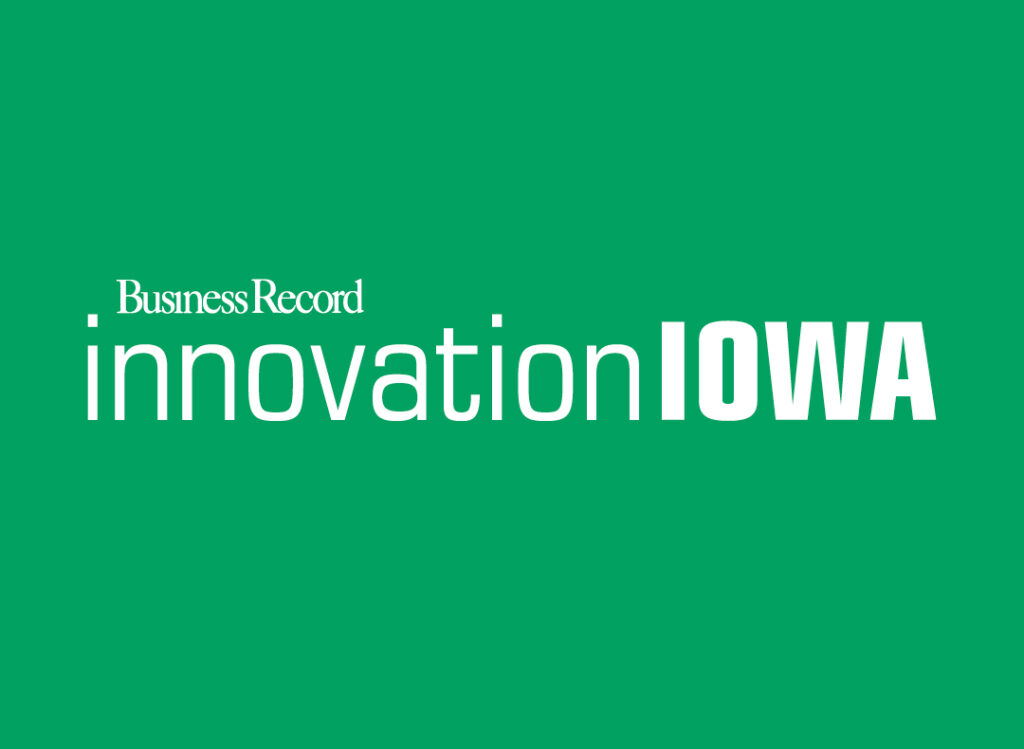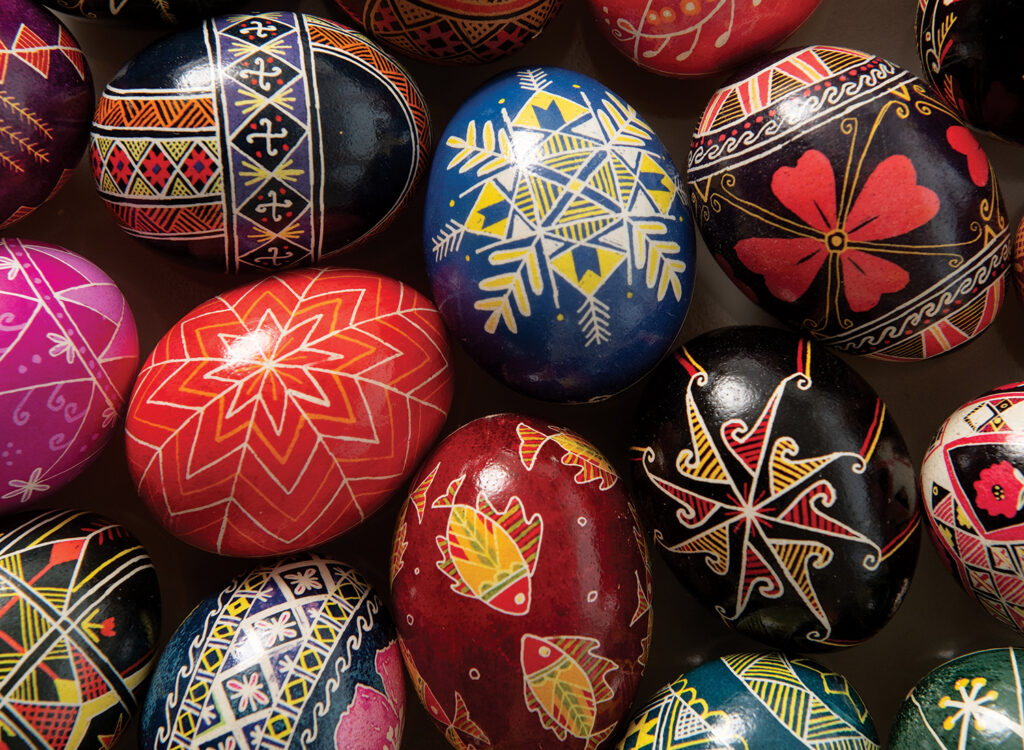Drinks in time: Homegrown producers welcome state review of liquor law

KENT DARR Nov 25, 2016 | 12:00 pm
10 min read time
2,322 wordsBusiness Record Insider, Retail and BusinessIt has taken John Sayles a mere 18 months to build name recognition for his vodka, but it could take him a lifetime to understand Iowa liquor laws.
Those laws were first established in 1934, at the end of Prohibition, and they have been tinkered with plenty of times over the years, but not with a view to the entire package of regulations that is contained in Iowa Code 123. That process is going on now, at the order of Gov. Terry Branstad.
When confronted with a question about the bureaucratic side of the liquor business, Sayles rarely has an answer. “I think, ‘Oh God, I don’t know the answer to this,’ ” he said.
What he does know is that for the state’s emerging micro-distillery industry, the laws are hindering growth.
Sayles is the mastermind behind Swell vodka, the fastest growing brand in sales in the state, behind only Templeton Rye, which is as much a national name as it is an Iowa label.
He credits growth to lessons he learned over a career in the marketing business. The folks at Iowa Distilling Co. who distill and bottle Swell are the experts in the nuances in Iowa law, he said.
That law is undergoing the first comprehensive review since it was enacted in 1934. For the most part, it is a template for the manufacture, distribution and retail sales of distilled spirits, wine and beer. Manufacturers, wholesalers and retailers each are a tier in what is referred to with a mix of reverence or disdain as the three-tier system.
Under Iowa law — states were allowed to write their own liquor-control laws after Prohibition was repealed — the state is the wholesaler. Stephen Larson, director of the Iowa Alcoholic Beverages Division, said that whatever policy recommendations emerge from the study groups, the state will remain the wholesaler.
The intention is that the three tiers should not collide with each other; nor should one dominate the others. Prior to prohibition, taverns mostly operated as a “tied house,” meaning that they bought their product from one manufacturer. Much of that product was locally brewed, distilled or vinted.
Those local operations have been undergoing a resurgence since the 1980s, but they picked up steam in the 1990s with native wineries producing their product from grapes grown in the Iowa countryside. Then came craft breweries and, in recent years, micro-distillers. They have shared common complaints about state liquor laws and common struggles in figuring out ways to survive in the marketplace.
The folks operating in each of those local industries are entrepreneurs in every sense. They are creative, hardworking, independent-minded risk takers. Larson and and Debi Durham, executive director of the Iowa Economic Development Authority, are co-chairs of the study group. They have said they want to continue to encourage those risk takers to develop their niches.
When the state’s native wine industry was going through a rebirth in the 1990s after disappearing during Prohibition, many industry insiders said old laws, especially restrictions on distributing their wine, held back their growth. And the same criticisms have been heard from the still-young micro-distillery industry. Ask a craft brewer what one key is to their survival and they will tell you it is the ability to serve their product on site. Micro-distillers can’t do that. So if you want to know how a locally produced rum goes down with a Coca-Cola, you’re going to have buy the the bottle and take it home.
Sayles’ guru among the distillers is Todd Dunkel, president of four-year-old Iowa Distilling Co. in Cumming.
“When I see paperwork, I go into panic mode,” Sayles said. “I’m an artist, I’m a creator, I run several businesses, and I say how in the hell do I do this?”
Distillers want a level playing field
Dunkel is following the meetings of the governor’s study group, which is made up of representatives from various segments of the industry and also includes public health and safety officials.
The group has several goals. One is to find ways to cut red tape and create a clearer path to licensing and regulation. Another is to create more opportunities for growth among homegrown native wineries, craft brewers and micro-distillers. In the end, the group will preserve the three-tier system.
Though Iowa liquor laws were established in 1934, they have undergone several changes, some that we now take for granted, such as allowing liquor by the drink — that privilege came along in 1964 — and others that strike to the heart of the three-tier system, such as allowing native wineries to ship their product to consumers, bypassing the distributors that make up one of the three tiers.
The state of Iowa changed the three-tier system from the very beginning, operating as both a wholesaler and retailer. The state eventually got out of the retail business. By controlling the wholesale distribution, Iowa has a predictable system for collecting and distributing tax revenues, Larson said.
Dunkel’s Iowa Distilling Co. has a plum location, located less than one mile off Interstate 35 in the Warren County community of Cumming. Iowa Distilling produces its own brands and distills for other brands, such as Sayles’ Swell vodka.
Dunkel said tourists traveling from Minneapolis to the Kansas City area, for example, frequently pull off the interstate, have a free sample — all samples are free at micro-breweries — and want to buy several bottles to take home. Under current law, those travelers can’t buy more than two bottles and Dunkel can’t sell them liquor by the drink.
Dunkel has experienced some frustration in forcing change. He points out that in the last four sessions of the Iowa General Assembly, micro-distillers have watched a bill that would loosen some of their regulations die in the Senate. He hopes that with Republican control of both the Iowa House and Senate, legislation supported by distillers will get a vote in both chambers.
“The people throwing it in the garbage in the past aren’t here now,” he said.
Micro-distillers currently are limited to producing 50,000 gallons of distilled spirits a year; they want that lifted to 100,000 gallons. In addition, they can sell no more than two bottles of liquor a day to one consumer; they want to raise that cap, and they want to be able to serve liquor by the drink.
“We want to be able to sell more so that we can grow our businesses, hire more people,” Dunkel said. “We can’t do that when we have these caps. It’s impossible to grow.”
Adam Cox, the general manager at Iowa Distilling, said that once a micro-distiller reaches the 50,000-gallon threshold, it is no longer considered a micro-distillery and, as a result, can no longer have a retail operation on site.
That means the T-shirts and ball caps and coasters and bandanas that help the operations turn a buck would have to disappear. On the other hand, if Iowa Distilling could sell liquor by the drink, it could host events, such as music performances, that would attract more customers and help the overall operation.
There are other hitches in the system. Iowa is what is called a control state. That means all alcohol coming into the state and going out to retailers passes through the Iowa ABD warehouse in Ankeny. By the time it shows up on a store shelf, after taxes and surcharges and bottle deposits are applied, the cost of a bottle of Sayles’ vodka, for example, has doubled from what the distillery paid for it, Dunkel said.
So, Iowa Distilling produces Swell vodka per Sayles’ recipe, bottles it, sticks a Sayles-designed label on the bottle, packages the bottles and ships them to the Iowa ABD warehouse. By the time the vodka returns to Iowa Distilling, where it can be sold at the rate of two bottles per customer per day, the cost has increased by at least 50 percent.
In a simplified version of that transaction, Iowa Distilling would sell a bottle of anything it produces to the state for $10 and buy it back for $15, Cox said. Sayles figures that every bottle of Swell that is sold includes $2.17 in federal taxes, plus state taxes, including a bottle deposit.
Here’s how. The state is allowed to add up to 50 percent to the wholesale price of alcohol, and an extra 50 cents is added for sales of single bottles — that is called a split case fee. The ABD also applies a bottle deposit of 9 cents. Taxes paid at the wholesale level on beer are 19 cents per gallon, and on wine they’re $1.75 per gallon. Retail sales tax is paid at the point of sale to consumers.
Dunkel said the bottle deposit is operating as a tax because few people return their empties.
By the time an Iowa Distilling Co. product hits the shelves of, say, a Hy-Vee Inc. grocery store, it is double the price paid to the producer, Dunkel said.
“We just feel like our hands are tied compared to other businesses,” he said. “We want to hire more people, we want to pay better salaries, but to do that we need to open more doors for ourselves.”
Opening doors
Sayles has more than three decades’ experience as a marketer. Judging by the fast pace of a conversation with him, his mind is always at work.
He says that if he had to go out and hire himself — a marketing expert, that is — he wouldn’t be in the liquor business. He has provided marketing advice and created labels and packaging for a range of products native wineries, craft breweries and micro-distilleries.
Sayles created Swell almost on a whim. He was helping another client of Iowa Distilling with bottle design and marketing and decided “This would be a fun business to try.”
He talked to Dunkel and Cox, found out that it wouldn’t be too expensive to bottle one batch and set off on an one-year slog through the state and federal licensing process. During that time, he did some research, got advice on prices and market penetration, and promoted his product.
“I’m a hustler. I can talk to people. I said, let’s just see if we can make it go,” Sayles said.
He followed the same advice he gives to clients. Number one, don’t put a lot of money into the marketing swag. Create a quality product and get it in front of people.
Sayles also has teamed up with the Indianola-based producers of Wild Heer Bloody Mary mix to market a gift box titled Mary Me that includes his vodka.
If he is in a restaurant and hears a waiter or waitress take a drink order that includes vodka, he calls them over and promotes his brand. He travels to grocery stores, taverns, restaurants and outlets that can sell alcohol. He contacts distributors in other states to persuade them to deliver Swell vodka. He wants it to be the top-selling vodka in Iowa and the go-to vodka — the well brand — for mixed drinks ordered at a restaurant or bar.
The Iowa ABD will automatically distribute the liquors, wines and beers produced in the state. That is not the case in other states, where distributors have to be convinced that they should deliver the product. So far, Sayles has persuaded distributors in Nebraska, North Dakota and South Dakota to deliver Swell.
“This will be the true test whether I have been successful for 35 plus years; if I do everything that I’ve told my customers to do, I should have a successful product,” he said.
History of Iowa liquor law
1963: Liquor by the drink can be consumed at licensed establishments. Counties have the “local option” of prohibiting liquor by the drink in their jurisdictions.
1972: Liquor statutes are streamlined from 12 chapters down to one, Chapter 123. Local option is repealed. Iowa Beer and Liquor Control Department replaces the Iowa Liquor Commission.
1973: Alcohol can be sold on Sundays, with a local option to prohibit Sunday sales. The local option is repealed in 1977.
1981: Brewers can sell beer they obtain from a wholesaler for on- or off-premises consumption.
1985: Iowa’s monopoly of the wholesale and retail sale of wine is ended. A dual system of wine is created with the issuance of new wholesale and retail wine permits to qualified applicants. Native wine manufacturers can ship wine to purchasers in and out of the state. Wine gallonage tax imposed on all wine sold at wholesale by native wineries.
1987: State-owned liquor stores close. The Iowa Beer and Liquor Control Department is renamed the Iowa Alcoholic Beverages Division, which retains its role as the sole wholesaler of all alcoholic liquor sold in the state.
1989: Brew pubs are created.
1996: The Reciprocal Shipment of Wines law is enacted, allowing Iowa native wineries to ship wine into other states with reciprocal shipment privilege laws to individuals 21 and older; wine can be for personal consumption only.
2009: Native wineries and other retailers can sell native wine for consumption on the licensed premises. Native wineries and breweries may share employees providing the employees don’t have an ownership interest.
2010: Iowa wine laws changed from reciprocity to direct shipment. Wine manufacturers in and out of state can ship product directly to Iowa consumers for personal use.
License is created for micro-distilleries. High alcoholic content beer is defined as beer that contains more than 5 percent of alcohol by weight, but not more than 12 percent.
2011: Liquor can be sold where gasoline is sold; allows sales of liquor at convenience stores.
2015: Brew pubs can sell beer to wholesalers in other states, in accordance with the laws of that state. Retailers can fill, refill and sell growlers of craft beer to go.
Source: Iowa Alcoholic Beverages Division











